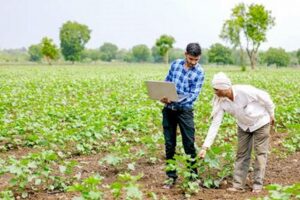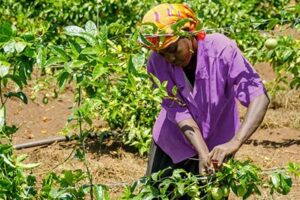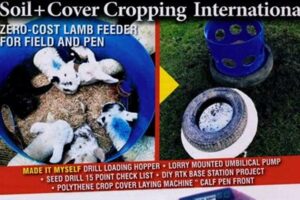Table of Contents
Fish farming, also known as aquaculture, is the practice of raising fish in a controlled environment for commercial purposes. This practice has gained significant importance due to the increasing demand for fish and seafood, coupled with the challenges faced by traditional fishing methods.
Editor’s Note: Fish farming practices have garnered widespread attention today due to their immense potential to address the growing global food security concerns. This guide delves into the intricacies of fish farming, providing valuable insights into its techniques, benefits, and future prospects.
Through extensive analysis and research, our team has meticulously compiled this comprehensive guide to empower our readers with the knowledge and resources they need to make informed decisions regarding fish farming practices.
Key Differences:
| Traditional Fishing | Fish Farming | |
|---|---|---|
| Control Over Environment | Limited | Significant |
| Sustainability | Variable | Higher Potential |
| Production Efficiency | Lower | Higher |
Main Article Topics:
- Techniques in Fish Farming
- Benefits and Advantages of Fish Farming
- Challenges and Limitations of Fish Farming
- Future Prospects and Innovations in Fish Farming
- Environmental Impact of Fish Farming
Fish Farming Practices
Fish farming practices encompass a wide range of essential aspects that contribute to the successful and sustainable production of fish for human consumption. These key aspects explore various dimensions related to fish farming, providing a comprehensive understanding of this important industry.
- Species Selection: Choosing the right fish species for farming, considering factors such as growth rate, market demand, and environmental suitability.
- Site Selection: Identifying appropriate locations for fish farms, taking into account water quality, depth, and proximity to markets.
- Feed Management: Providing fish with a nutritious and balanced diet to optimize growth and health.
- Water Quality Management: Maintaining optimal water conditions, including temperature, pH, and oxygen levels, is crucial for fish health and survival.
- Disease Prevention and Control: Implementing measures to prevent and control diseases that can affect farmed fish.
- Harvesting Techniques: Employing efficient and humane methods to harvest fish at the appropriate time.
- Environmental Sustainability: Minimizing the environmental impact of fish farming operations, such as water pollution and habitat degradation.
- Economic Viability: Ensuring that fish farming practices are economically sustainable for farmers.
- Social Responsibility: Considering the social and ethical implications of fish farming, including labor practices and local community engagement.
- Technological Advancements: Utilizing innovative technologies to improve efficiency, reduce costs, and enhance sustainability in fish farming.
These key aspects are interconnected and interdependent, and successful fish farming practices require careful attention to each one. By understanding and implementing these aspects effectively, fish farmers can contribute to the sustainable production of fish, meeting the growing global demand for seafood while minimizing environmental impacts.
Species Selection
In fish farming practices, species selection is of paramount importance as it sets the foundation for the success and sustainability of the entire operation. Choosing the right fish species involves carefully considering various factors such as growth rate, market demand, and environmental suitability.
- Growth Rate: The growth rate of the fish species directly impacts the production efficiency and profitability of the farm. Species with faster growth rates allow for shorter production cycles, resulting in higher yields and quicker returns on investment.
- Market Demand: Selecting fish species that are in high demand in the market ensures that farmers can sell their products at a competitive price. Market research and analysis are crucial to identify species that have a strong consumer base and stable market prices.
- Environmental Suitability: The environmental conditions of the farm, such as water temperature, pH, and dissolved oxygen levels, must be compatible with the chosen fish species. Selecting species that are well-adapted to the specific farming environment minimizes stress, improves fish health, and reduces mortality rates.
By carefully considering these factors, fish farmers can select the most suitable species for their farming operations, optimizing production efficiency, maximizing profitability, and ensuring the long-term sustainability of their enterprise.
Site Selection
In fish farming practices, site selection is a critical decision that significantly influences the success and sustainability of the operation. Identifying appropriate locations for fish farms requires careful consideration of various factors, including water quality, depth, and proximity to markets.
- Water Quality: The water quality of the selected site is paramount for the health and survival of the farmed fish. Factors such as temperature, pH, dissolved oxygen levels, and salinity must be within the optimal range for the chosen fish species. Regular monitoring of water quality parameters is essential to ensure the well-being of the fish and prevent disease outbreaks.
- Depth: The depth of the water at the farming site is important for several reasons. Adequate depth ensures sufficient water volume to support the fish population, prevents overcrowding, and minimizes the risk of oxygen depletion. It also allows for the installation of necessary infrastructure, such as cages, nets, and feeding systems.
- Proximity to Markets: The proximity of the fish farm to major markets directly impacts transportation costs and the freshness of the products delivered to consumers. Shorter transportation distances reduce stress on the fish, minimize product spoilage, and allow for timely delivery to meet market demands.
By carefully considering these factors and selecting appropriate sites for fish farming, farmers can optimize fish health, reduce production costs, and improve the overall efficiency and profitability of their operations.
Feed Management
In fish farming practices, feed management plays a pivotal role in ensuring the health, growth, and overall productivity of farmed fish. Providing a nutritious and balanced diet is essential for optimizing fish growth, preventing diseases, and maintaining a sustainable farming operation.
- Nutritional Requirements: Different fish species have specific nutritional requirements depending on their age, size, and physiological stage. Feed management involves formulating and providing diets that meet these specific requirements, ensuring optimal nutrient intake for growth, reproduction, and immune function.
- Feed Ingredients: Fish feed is typically composed of a variety of ingredients, including fishmeal, soybean meal, corn, and vitamins. Careful selection of high-quality ingredients ensures that the feed provides the necessary nutrients in the correct proportions.
- Feeding Strategies: The frequency and quantity of feeding are important considerations in feed management. Overfeeding can lead to water pollution and health issues, while underfeeding can limit growth and productivity. Optimal feeding strategies involve determining the appropriate feeding rates and schedules based on fish species, age, and environmental conditions.
- Feed Technology: Advances in feed technology have led to the development of specialized feed formulations and delivery systems. These innovations improve feed efficiency, reduce waste, and enhance fish health by providing tailored nutrition to specific fish species and growth stages.
Effective feed management is crucial for successful fish farming practices as it directly impacts fish health, growth rates, and overall profitability. By providing a nutritious and balanced diet, fish farmers can optimize production efficiency, minimize environmental impacts, and ensure the long-term sustainability of their operations.
Water Quality Management
In fish farming practices, water quality management is paramount to ensure the health, growth, and survival of farmed fish. Maintaining optimal water conditions, including temperature, pH, and oxygen levels, is essential for various reasons:
- Temperature: Water temperature directly affects fish metabolism, growth rates, and immune function. Optimal temperature ranges vary depending on the fish species, and maintaining stable temperatures within these ranges is crucial for fish health and well-being.
- pH: The pH of water measures its acidity or alkalinity. Fish have a narrow pH tolerance range, and deviations from this range can cause stress, reduced growth, and increased susceptibility to diseases.
- Oxygen Levels: Dissolved oxygen is essential for fish respiration. Maintaining adequate oxygen levels in the water ensures that fish can obtain the oxygen they need to survive and thrive.
- Monitoring and Control: Regular monitoring of water quality parameters is essential to detect any deviations from optimal conditions. Fish farmers employ various technologies, such as sensors and probes, to monitor water quality and make necessary adjustments to maintain stable and healthy conditions for their fish.
Effective water quality management is a cornerstone of successful fish farming practices. By maintaining optimal water conditions, fish farmers can prevent diseases, improve fish growth and survival rates, and ensure the overall health and productivity of their farmed fish.
Disease Prevention and Control
Disease prevention and control are critical components of fish farming practices, directly impacting the health, productivity, and sustainability of aquaculture operations. Diseases in farmed fish can cause significant economic losses, reduce product quality, and pose risks to human health if transmitted through seafood consumption.
Implementing effective disease prevention and control measures is essential to safeguard the health of farmed fish and ensure a sustainable and profitable aquaculture industry. These measures include:
- Biosecurity Protocols: Implementing strict biosecurity protocols to prevent the introduction and spread of diseases into fish farms. This includes measures such as quarantine procedures, disinfection of equipment, and controlled access to farm sites.
- Vaccination and Immunization: Vaccinating fish against common diseases can significantly reduce the risk of outbreaks and improve fish survival rates.
- Health Monitoring and Surveillance: Regularly monitoring fish health and conducting disease surveillance helps detect diseases early, allowing for prompt treatment and control measures.
- Antibiotic Use: Judicious use of antibiotics is sometimes necessary to treat bacterial infections in farmed fish. However, overuse of antibiotics can lead to antibiotic resistance, which poses a significant challenge to both animal and human health.
- Environmental Management: Maintaining optimal water quality and providing a healthy environment for fish can help prevent stress and disease outbreaks.
Effective disease prevention and control measures are essential for the long-term sustainability of fish farming practices. By implementing these measures, fish farmers can reduce the risk of disease outbreaks, improve fish health and productivity, and ensure the safety of farmed fish products for consumers.
| Challenges | Practical Solutions |
|---|---|
| Emergence of new and resistant diseases | Research and development of new vaccines and treatments |
| Antibiotic resistance | Judicious use of antibiotics and development of alternative treatments |
| Climate change and its impact on disease dynamics | Adaptation of farming practices and development of resilient fish strains |
Harvesting Techniques
In fish farming practices, harvesting techniques play a crucial role in ensuring the quality, sustainability, and profitability of the operation. Employing efficient and humane methods to harvest fish at the appropriate time is essential for maintaining fish welfare, minimizing stress, and maximizing product value.
- Selective Harvesting: Using selective harvesting techniques, such as size grading or species sorting, allows farmers to harvest fish that have reached the desired market size or meet specific quality criteria. This helps optimize yield, reduce waste, and maintain a consistent product.
- Stress Reduction: Minimizing stress during harvesting is essential for fish welfare and product quality. Humane harvesting methods involve careful handling, proper stunning techniques, and rapid processing to reduce stress levels.
- Timing and Seasonality: Harvesting fish at the appropriate time ensures optimal product quality and market value. Factors such as fish maturity, market demand, and environmental conditions are considered to determine the ideal harvesting window.
- Post-Harvest Handling: Proper handling and storage of harvested fish are crucial to maintain product quality and freshness. Rapid chilling, proper packaging, and adherence to food safety regulations ensure that fish reach consumers in optimal condition.
By implementing efficient and humane harvesting techniques, fish farmers can minimize waste, maximize product quality, and ensure the welfare of their fish. These practices contribute to the overall sustainability and profitability of fish farming operations, meeting consumer demand for high-quality and responsibly sourced seafood products.
Environmental Sustainability
Environmental sustainability is a critical aspect of responsible fish farming practices. Minimizing the environmental impact of fish farming operations is essential for preserving aquatic ecosystems, protecting biodiversity, and ensuring the long-term viability of the industry.
- Water Pollution: Fish farming can generate wastewater containing nutrients, organic matter, and chemicals. Implementing water treatment systems, managing feed inputs, and using sustainable farming techniques can reduce water pollution and protect the surrounding environment.
- Habitat Degradation: Fish farming can potentially alter or destroy natural habitats. Selecting suitable farming sites, using environmentally friendly equipment, and restoring habitats after operations can mitigate habitat degradation and preserve biodiversity.
- Disease Management: Fish diseases can spread to wild fish populations. Employing biosecurity measures, vaccinating fish, and using sustainable health management practices can prevent disease outbreaks and protect both farmed and wild fish.
- Feed Sustainability: Fish feed can contribute to environmental impacts, such as overfishing and deforestation. Using sustainable feed sources, such as plant-based ingredients and alternative proteins, can reduce the environmental footprint of fish farming.
By adopting environmentally sustainable practices, fish farmers can minimize their impact on the environment and contribute to the long-term health of aquatic ecosystems. Striking a balance between production efficiency and environmental conservation is essential for the sustainable development of the fish farming industry.
Economic Viability
Economic viability is a cornerstone of sustainable fish farming practices. Without profitability, fish farmers cannot maintain their operations, invest in new technologies, or ensure the long-term sustainability of the industry. Several key factors contribute to the economic viability of fish farming:
- Production Efficiency: Optimizing production efficiency through effective feed management, disease control, and technological advancements can reduce operating costs and improve profit margins.
- Market Demand: Identifying and targeting markets with strong demand for farmed fish products, such as high-value species or niche markets, can ensure profitable sales.
- Cost Management: Controlling operational costs, such as feed, labor, and energy, is essential for maintaining profitability. Implementing sustainable practices that reduce environmental impacts can also lead to cost savings.
- Government Support: Government policies, subsidies, and incentives can provide financial support to fish farmers, helping them overcome economic challenges and invest in sustainable practices.
Balancing economic viability with environmental sustainability is crucial for the long-term success of fish farming. By adopting efficient production methods, targeting profitable markets, managing costs effectively, and leveraging government support, fish farmers can ensure the economic sustainability of their operations while contributing to the sustainable development of the industry.
Social Responsibility
Social responsibility is an integral aspect of fish farming practices, encompassing the ethical and societal considerations that arise from the industry. It involves addressing the impact of fish farming on local communities, ensuring fair labor practices, and promoting sustainable development.
- Labor Practices: Fish farming operations have a responsibility to ensure fair and safe working conditions for their employees. This includes adhering to labor laws, providing adequate training and safety measures, and respecting workers’ rights.
- Local Community Engagement: Fish farms can have a significant impact on local communities, both positive and negative. It is essential to engage with communities, address their concerns, and contribute to their well-being through initiatives such as job creation, infrastructure development, and environmental conservation.
- Ethical Considerations: Fish farming raises ethical questions related to animal welfare, environmental sustainability, and food security. Farmers must prioritize the humane treatment of fish, minimize environmental impacts, and contribute to the responsible production of food.
- Sustainable Development: Fish farming practices should align with the principles of sustainable development, balancing economic growth with environmental protection and social equity. This includes adopting environmentally friendly technologies, reducing waste, and promoting the long-term viability of the industry.
By embracing social responsibility, fish farmers can foster positive relationships with local communities, ensure ethical and sustainable practices, and contribute to the overall well-being of society. This commitment is essential for the long-term success and acceptance of fish farming as a responsible and sustainable food production system.
Technological Advancements
Technological advancements play a vital role in the evolution of fish farming practices, enabling farmers to optimize efficiency, reduce costs, and enhance the sustainability of their operations. These advancements encompass a wide range of technologies, including:
- Automated Feeding Systems: These systems utilize sensors and computer-controlled mechanisms to deliver precise amounts of feed to fish, minimizing waste and optimizing growth rates.
- Environmental Monitoring Systems: These systems continuously monitor water quality parameters, such as temperature, pH, and dissolved oxygen levels, allowing farmers to make informed decisions and maintain optimal conditions for fish health.
- Disease Detection and Prevention Technologies: Advanced diagnostic tools and vaccines help farmers identify and prevent diseases, reducing mortality rates and ensuring fish welfare.
- Aquaculture Engineering: Innovations in cage design, water circulation systems, and waste management technologies improve fish health, reduce environmental impacts, and increase production efficiency.
The integration of these technologies into fish farming practices has resulted in significant benefits:
- Increased Production Efficiency: Automated feeding and environmental monitoring systems optimize resource allocation, reduce labor costs, and improve fish growth rates.
- Reduced Environmental Impact: Advanced waste management technologies minimize nutrient pollution, and disease detection systems prevent the spread of pathogens, safeguarding aquatic ecosystems.
- Improved Fish Welfare: Real-time monitoring of water quality and disease detection systems ensure optimal fish health and reduce stress levels.
- Enhanced Sustainability: Technological advancements contribute to the long-term viability of fish farming by promoting responsible resource use and reducing environmental footprints.
As technology continues to advance, the future of fish farming holds even greater promise. Ongoing research and development in areas such as artificial intelligence, remote sensing, and genetic engineering have the potential to further revolutionize the industry, driving increased efficiency, sustainability, and profitability.
| Technology | Benefits |
|---|---|
| Automated Feeding Systems | Reduced feed waste, optimized growth rates |
| Environmental Monitoring Systems | Improved water quality management, reduced disease outbreaks |
| Disease Detection and Prevention Technologies | Early disease detection, reduced mortality rates |
| Aquaculture Engineering | Improved fish health, reduced environmental impacts, increased efficiency |
FAQs on Fish Farming Practices
This section addresses frequently asked questions and misconceptions surrounding fish farming practices, providing concise and informative answers backed by scientific research and industry expertise.
Question 1: Is fish farming harmful to the environment?
Answer: While fish farming can have environmental impacts like any industry, modern practices prioritize sustainability. Environmentally friendly technologies, responsible waste management, and disease prevention measures minimize negative effects on ecosystems.
Question 2: Are farmed fish less nutritious than wild fish?
Answer: Farmed fish can be equally nutritious as wild fish, and in some cases, even more so. Proper feed formulations ensure adequate levels of essential nutrients, including omega-3 fatty acids, protein, and vitamins.
Question 3: Do farmed fish contain antibiotics?
Answer: Antibiotic use in fish farming is strictly regulated and monitored. Antibiotics are only used when necessary to treat diseases and are administered responsibly to minimize residues in fish products.
Question 4: Is fish farming more efficient than traditional fishing?
Answer: Yes, fish farming offers higher production efficiency compared to traditional fishing. Controlled environments allow for optimized feeding, disease management, and reduced bycatch, resulting in higher yields with less environmental impact.
Question 5: Can fish farming meet the growing global demand for seafood?
Answer: Fish farming plays a crucial role in meeting the increasing demand for seafood. By providing a sustainable and reliable source of protein, fish farming reduces pressure on wild fish stocks and contributes to global food security.
Question 6: What are the ethical concerns associated with fish farming?
Answer: Fish farming raises ethical concerns related to fish welfare, environmental sustainability, and social responsibility. Industry best practices prioritize humane treatment, minimize environmental impacts, and promote fair labor practices throughout the supply chain.
In summary, fish farming practices have evolved to address environmental concerns, ensure nutritional quality, minimize antibiotic use, enhance efficiency, contribute to global food security, and uphold ethical standards. As the industry continues to innovate and adopt sustainable practices, it plays a vital role in meeting the growing demand for seafood while preserving marine ecosystems.
Transition to the next article section
Fish Farming Practices
In the face of growing global demand for seafood, fish farming has emerged as a crucial industry. Adopting sustainable and effective practices is essential for the long-term success and environmental integrity of fish farming. Here are some key tips to consider:
Tip 1: Prioritize Species Selection
Choosing the right fish species for your farming operation is paramount. Consider factors such as growth rate, market demand, and environmental suitability. Selecting species that thrive in the specific farming conditions and align with market preferences ensures optimal productivity and profitability.
Tip 2: Implement Biosecurity Measures
Preventing and controlling diseases is critical in fish farming. Implement strict biosecurity protocols, including quarantine procedures, disinfection of equipment, and controlled access to farm sites. These measures minimize the risk of disease outbreaks, safeguarding fish health and reducing economic losses.
Tip 3: Optimize Feed Management
Provide fish with a nutritious and balanced diet to support their growth and well-being. Formulate diets based on the specific nutritional requirements of the species and consider factors like feed efficiency and environmental impact. Regular monitoring and adjustment of feeding strategies ensure optimal nutrient intake and minimize waste.
Tip 4: Maintain Water Quality
Fish health and survival depend on optimal water quality. Regularly monitor and maintain water temperature, pH, and oxygen levels within suitable ranges. Utilize aeration systems, water treatment technologies, and proper waste management practices to create a healthy and productive environment for your fish.
Tip 5: Embrace Technological Advancements
Incorporate innovative technologies into your fish farming practices to enhance efficiency, sustainability, and profitability. Automated feeding systems, environmental monitoring sensors, and disease detection tools can optimize resource allocation, reduce labor costs, and improve fish health. Stay abreast of technological developments to gain a competitive edge.
By implementing these tips, fish farmers can contribute to the sustainability and profitability of the industry while meeting the growing demand for seafood responsibly.
Transition to the next article section
Fish Farming Practices
Fish farming practices have emerged as a vital means of meeting the growing global demand for seafood while mitigating the strain on wild fish stocks. This comprehensive exploration has highlighted key aspects of fish farming, encompassing species selection, sustainability, technological advancements, and social responsibility.
By adopting responsible and innovative fish farming practices, we can ensure the long-term viability of the industry and contribute to global food security. Prioritizing sustainable practices, embracing technological advancements, and upholding ethical standards will pave the way for a thriving and sustainable future for fish farming.
Youtube Video:







